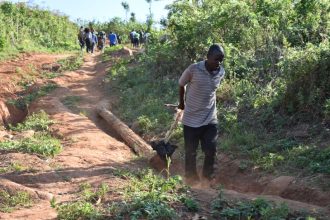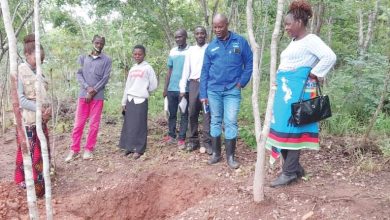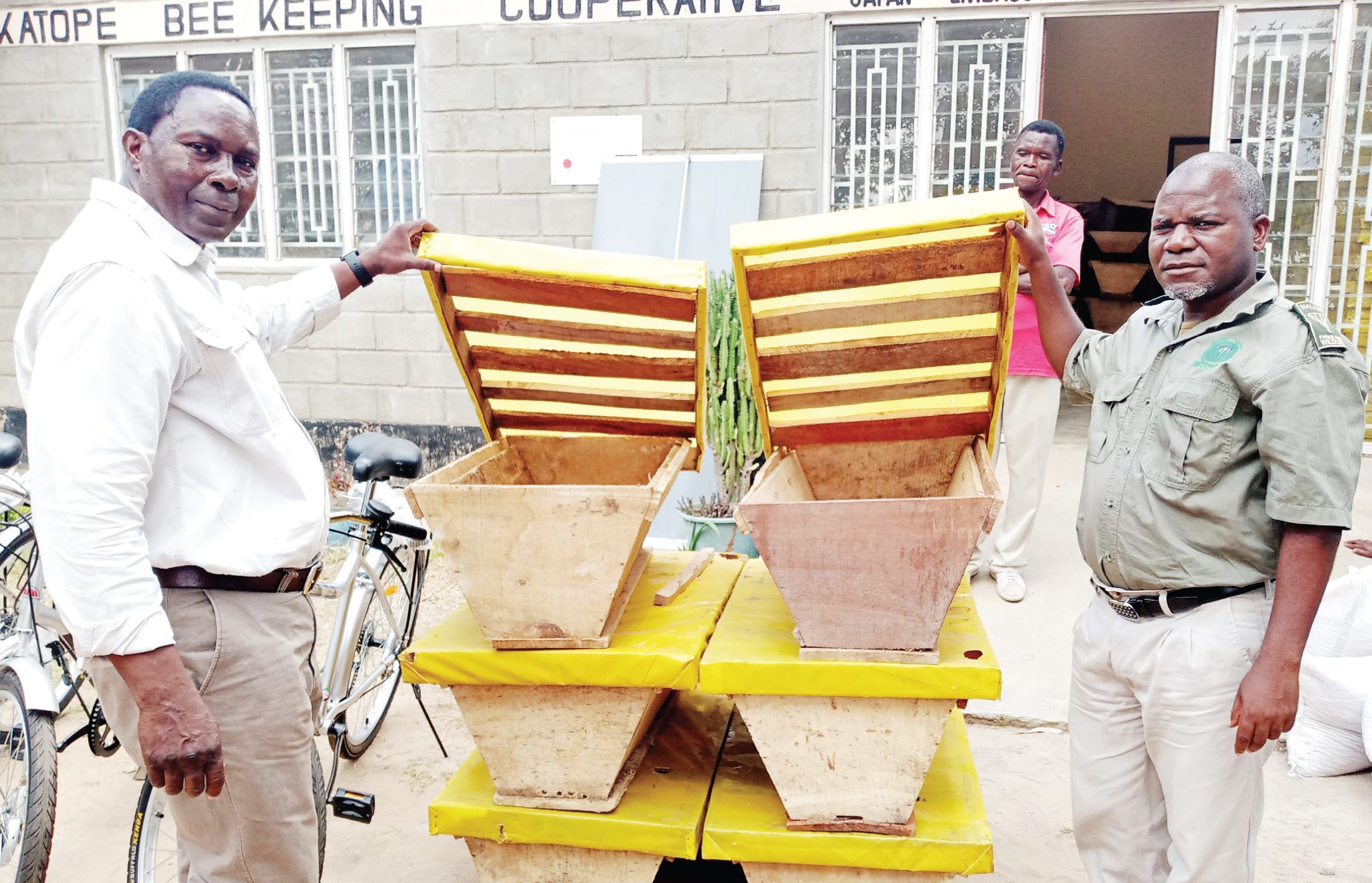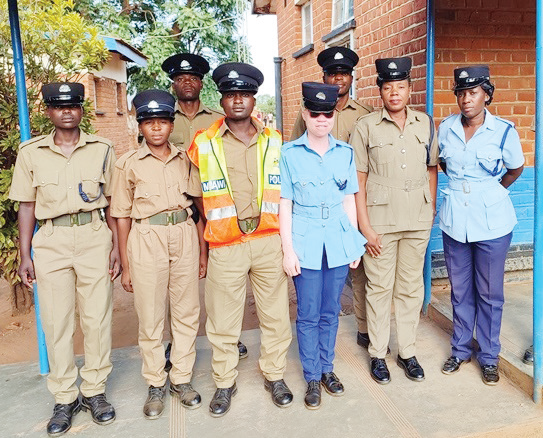Solar energy for sustained water supply
When Edmond Hami and his family shifted to Mzuzu in 2020, they endured nightmare Sundays as blackouts hit the northern city on Sundays every two weeks.
The fortnightly outages allow Electricity Supply Corporation of Malawi (Escom) to fix the only power transmission line from power generation sites on the Shire River to the Northern Region.

“We love this city, but every time there is a blackout, we run out of water for the whole day or two until power returns,” he says.
However, the worst shock for the retiree from Blantyre occurred when power tripped following severe flooding caused by Tropical Storm Ana last month in the Southern Region
The rainstorm overwhelmed power dynamos on the country’s largest river, where Escom sources over 90 percent of its electricity.
The most devastated was Kapichira, where floods and debris ripped a dam wall that diverts the river to a powerhouse and buried the intake in mud before reverting to its natural course.
This struck 132 megawatts off the grid, a third of the grid power that serves nearly 12 percent of the population.
As usual, all five water boards announced in quick succession the drying of taps.
The ripples of the tragedy reached Mzuzu, almost 700km away, but Hami believes they need not disrupt power and water supply beyond the Shire Valley, worst hit by the cyclone that affected 900 000 people.
Yet the breakdown in electricity and water supply was felt by his family of seven and the entire Northern Region.
“My family had endured a nightmare. All the toilets are stinking. For two to three days there was no water for cooking, cleaning kitchen utensils, washing clothes or maintaining sanitation in our home,” Hami laments.
He commends Northern Region Water Board (NRWB) for investing in solar energy to insulate its customers from effects of electricity woes.
The power outages are worsened by climate shocks. Since 2015, Malawi has experienced three devastating floods that choked both electricity and water supply.
Hami reckons the frequent disasters associated with climate change require Malawi “to stop putting our eggs in one basket”.
“The nation needs to invest in new power generation sites in all three regions and use other energy sources, including solar which thrives on abundant sunshine,” he implores.
To Hami, the solar farm taking shape at Mzuzu Water Treatment Station in the lush Kaning’ina hills could be a timely solution to power-related water problems.
He argues: “From the fortnightly blackouts to the rude awakening from Tropical Storm Ana, it is no longer sustainable to rely on hydropower alone, especially because we rely on a single river.
“When that river is hit by disasters fuelled by climate change, the whole country suffers and Mzuzu went three to four days without water. That is not strategic for us, it is too risky and it needs to change.”
Resilient water supply
NRWB has constructed the solar farm under the 24.6 million-euro Malawi Water Efficiency Project funded by the European Investment Bank (EIB), a major provider of climate financing.
During CoP26, the United Nations Climate conference held last November in Glasgow, EIB president Werner Hoyer encouraged companies to reduce carbon emissions and accelerate the transition to a world with fewer or no greenhouse gasses.
“By increasing financing in adaptation, we help to build more resilient infrastructure around the world and, in particular, in regions that need it most because of their exposure to extreme weather,” he said.
In Mzuzu, solar panels covering an area almost half a football field turn sunlight into electricity for pumping water from the treatment plant to all parts of the city.
“The main objective is to improve water supply in Mzuzu where population is growing fast,” says project manager Mwawi Kumwenda.
Last year, the utility opened another solar-powered water supply system at Ekwendeni, almost 20km north of the fastest-growing city. This delinked the trading centre founded by Scottish Presbyterian missionaries from Mzuzu’s water supply, which is struggling with population pressure.
Kumwenda recalls: “The city wasn’t receiving enough water because Lunyangwa Dam was designed to supply water until 2005, so we delinked Ekwendeni while searching for funds to construct a new dam at Lambilambi near the Elephant Rock in the Viphya Plantation.
“The treatment plant was designed for 2010, then we upgraded it to take us to 2025. We also upgraded the intake, storage facilities and booster stations.”
However, the investment did not solve “one of the biggest challenges”, unreliable energy.
“The country isn’t generating enough power to meet the growing demand. Sometimes, we get low voltage that we cannot use to pump water. Currently, our region is only supplied by the lakeshore transmission line and this is problematic. We still get faults that sometimes take 24 hours to rectify,” explains the engineer.
NRWB settled for solar energy after smoky experiments with diesel-powered generators that pollute air with emissions that fuel climate change.
“In the long-term, solar energy was the most sustainable and a better option than generators that run on fossil fuel. All our seven stations in Mzuzu will be powered by solar. All the systems will have solar as a primary source.”
The 480-kilowatt solar farm at the treatment plant relegates the on-off national grid to backup.
It recharges a cache of batteries with a capacity to power water supply for three hours with all machines running. The power storage system becomes handy at night and during cloudy days.
Kumwenda looks to the future with hope: “The main winners are our customers who will experience improved supply as we will continue treating and providing water regardless of blackouts.
“Even when we have outages at night, water supply will not be affected because the power backup.”
NRWB struggles to store huge volumes of water to beat blackouts.
Its reservoirs have been outgrown by population boom, with surging demand from unplanned settlements such as Geisha.
“We have upgraded our storage capacity, but the tanks still cannot meet the demand for the entire period we have outages,” says Kumwenda. “For more areas, we have eight to 12 hours of storage, but Chimaliro and Lunyangwa has 24 hours capacity.”
Area 2 and 4 used to run out of water no more than two hours, but it now gushes for eight hours on the trot.
Climate Action
The snub on diesel generators conforms to national policies to accelerate the global switch to renewable energy to combat climate change.
The shift comes amid climate-related weather shocks that complicate water and electricity supply in Malawi.
Almost 95 percent of the country’s electricity is generated from running water, mostly the Great Shire which is prone to flooding as well as water stress.
Kumwenda counts the risks as only four of the 381 megawatts that power the nation come from Wovwe in Karonga.
“The recent crisis illustrated the devastating effects of climate change and environmental degradation on the Shire River. The off-grid renewable energy investment is a big advantage to lessen such impacts,” he tells Weekend Nation.
When Cyclone Ana hit, Mzuzu was among the hardest hit.
“Many areas started experiencing dry taps within 24 hours and the situation was pretty bad by the second and third day,” says Elina Ngwira, from Area 4 Township currently under construction.
The solar farm and three-hour backup promises continued water supply water day and night.
Meanwhile, NRWB is looking for financing to deliver solar-powered water supply throughout the North.
Chief executive officer Titus Mtegha the benefits of investing in renewable energy go beyond uninterrupted water supply for customers’ health and well-being.
“First, NRWB will cut energy costs by 60 percent and this should make water more affordable for our customers.
“We will also generate more revenue and further improve service delivery as customers will be accessing water 24/7 regardless of grid-power outages. The inconveniences caused by blackouts will be history,” he explained.
The NRWB chief details the utility’s renewable energy roadmap after switching on Mzuzu and Ekwendeni trials in April.
Engineer Mtegha hints: “Once the pilot has been completed, we are moving to install solar power in Chitipa and Mzimba water supply facilities by December 2023.
“Then Karonga, Chintheche and Nkhata Bay will follow by December 2024 and finally Rumphi, Chilumba, Jenda and Songwe by 2025.”
Future looks solar
NRWB also plans a feasibility study on the possibility of lifting water from Lake Malawi in Nkhata Bay to Mzuzu using solar energy.
“This is an ambitious undertaking which will offer Mzuzu the best and affordable alternative source of raw water,” Mtegha states. “I believe the water sector should embrace renewable energy as a best alternative to grid power this time when our colleagues in the energy sector are facing challenges to supply the country.”
And demanding water users such as Hami are certain to wave goodbye to stuttering supply and taps that either cough or whistle instead of producing water when it is needed.
“Time has come for all water boards in the country to embrace innovative solutions, not just blaming erratic electricity for intermittent water supply come rain or sunshine.”






One Comment